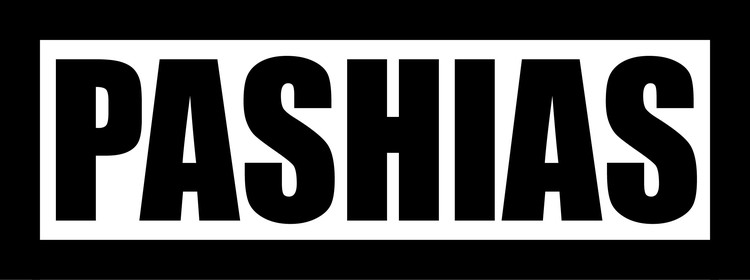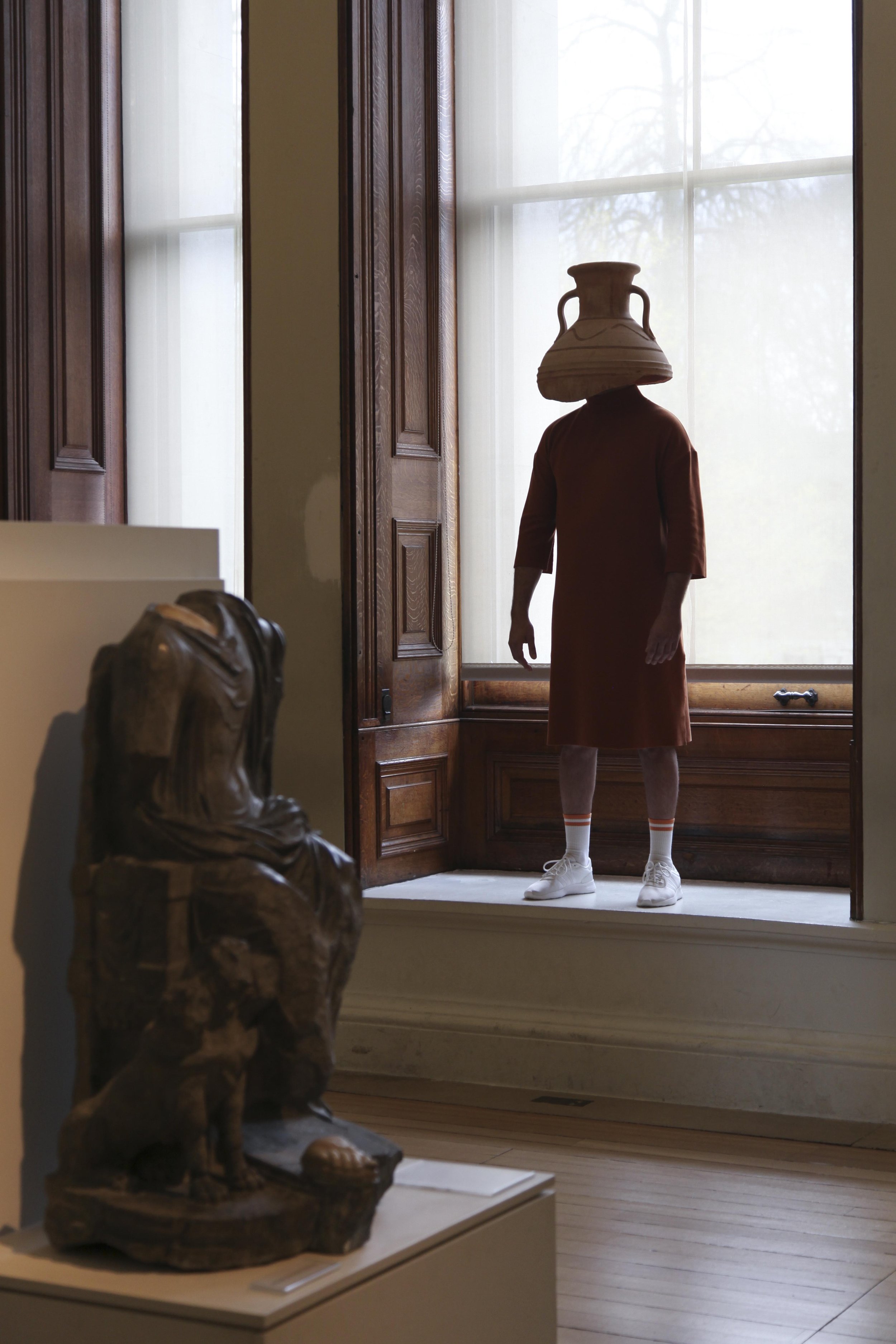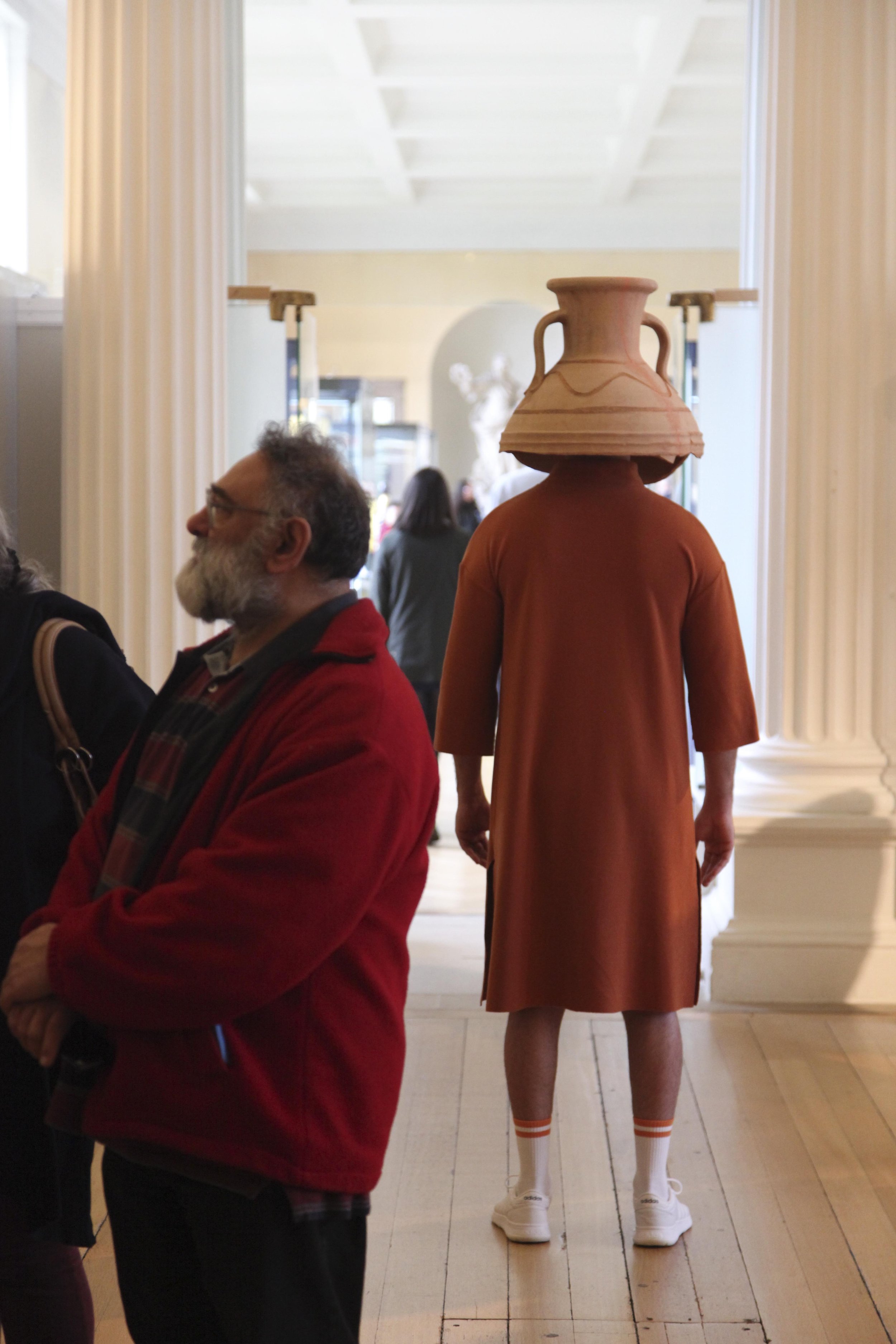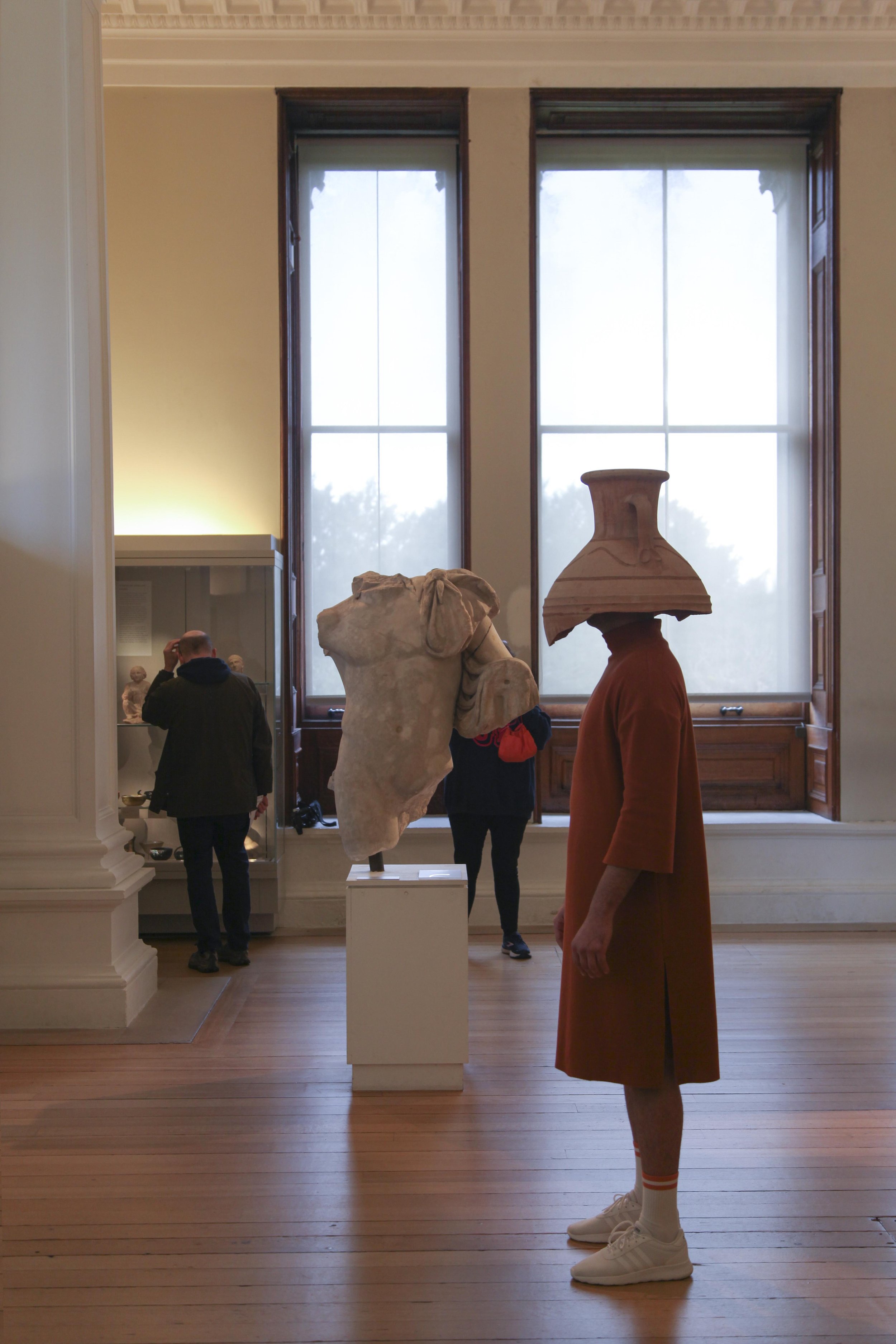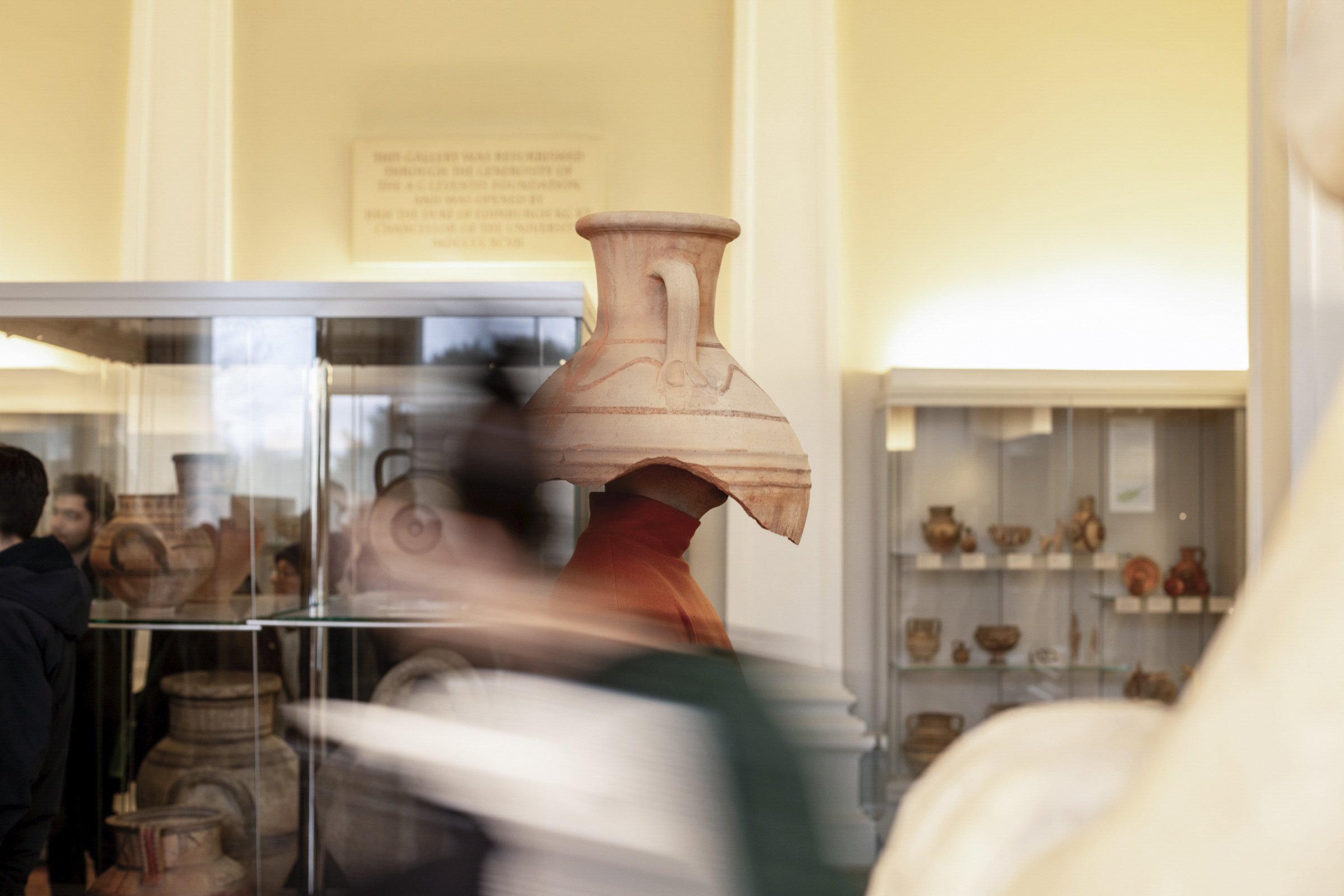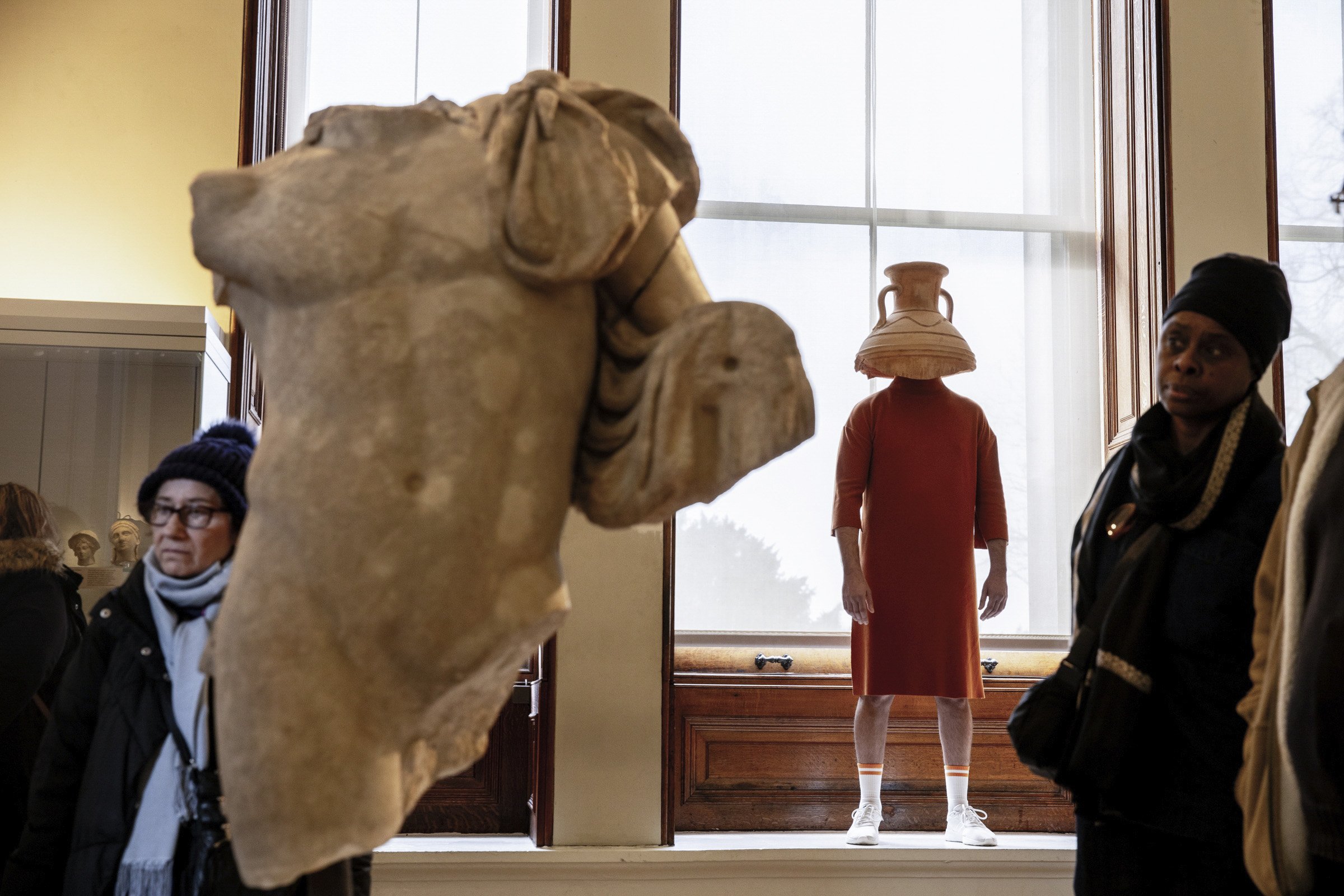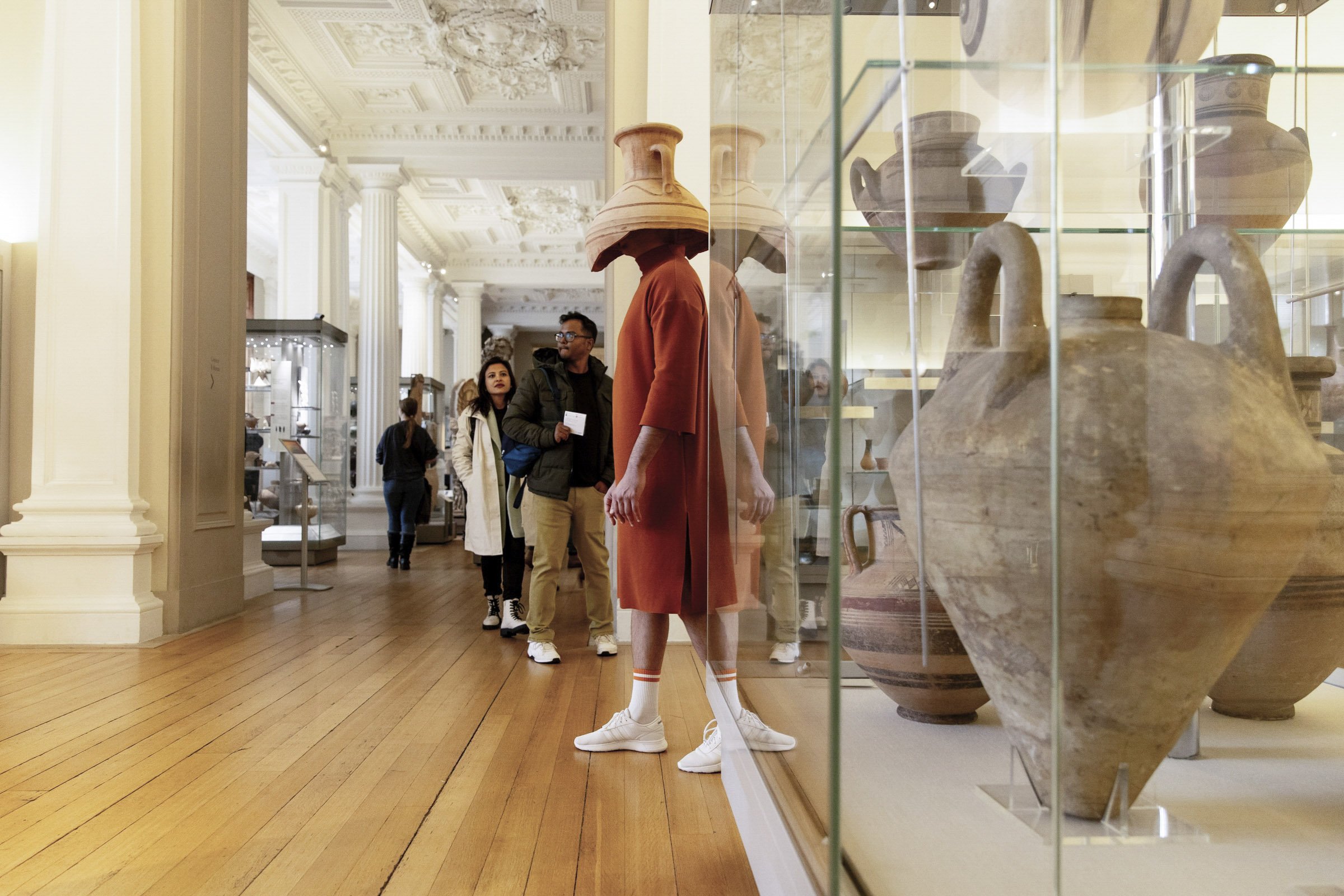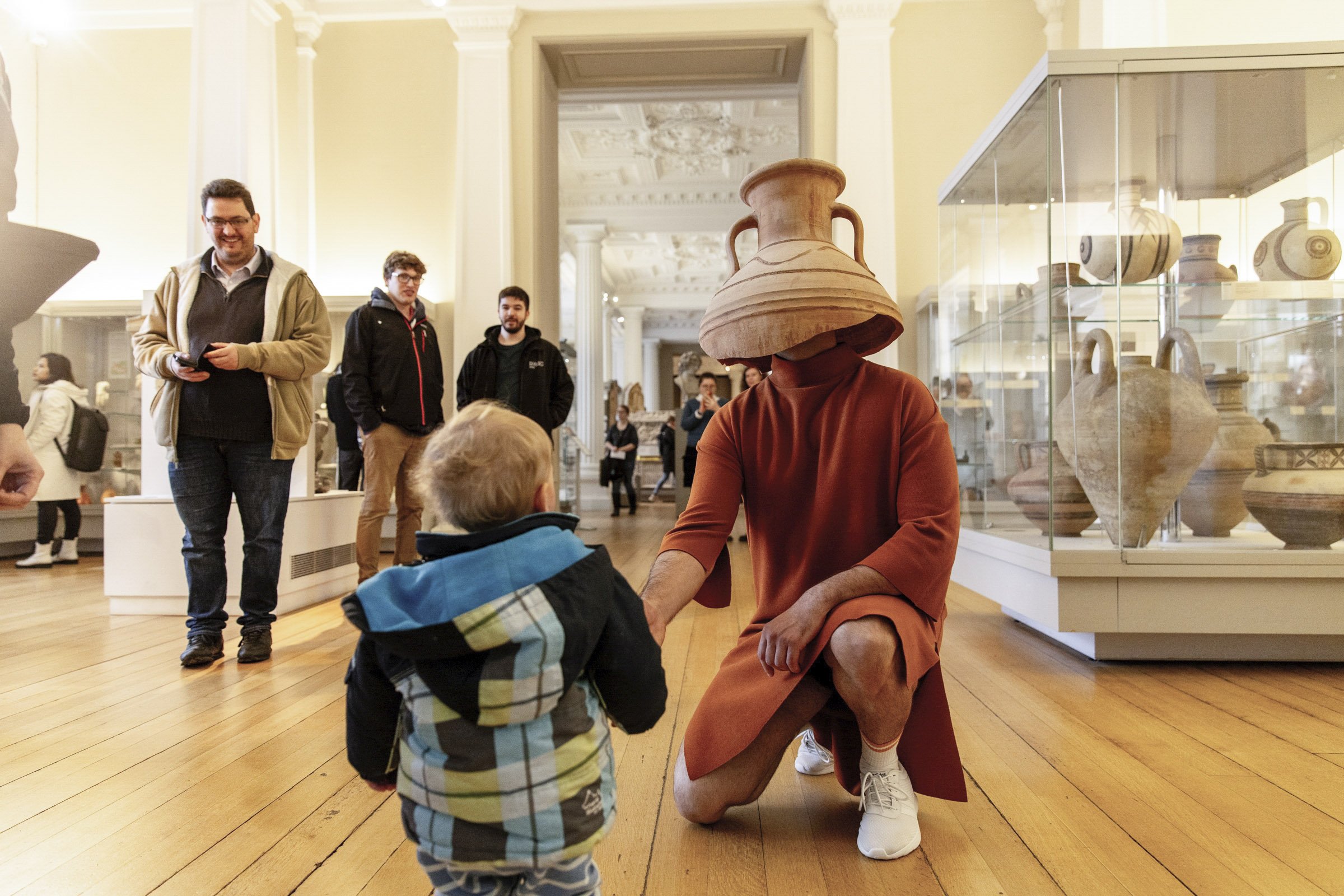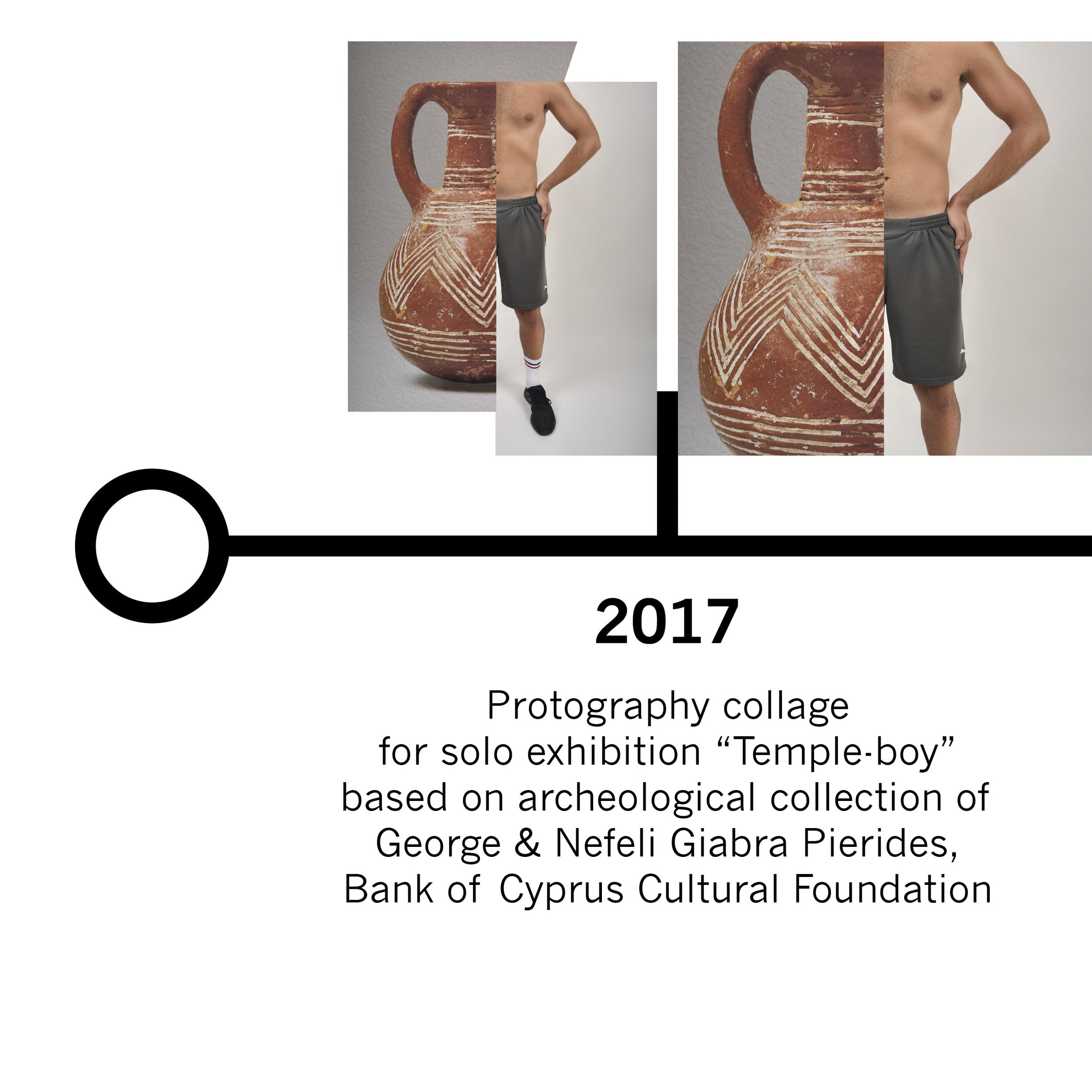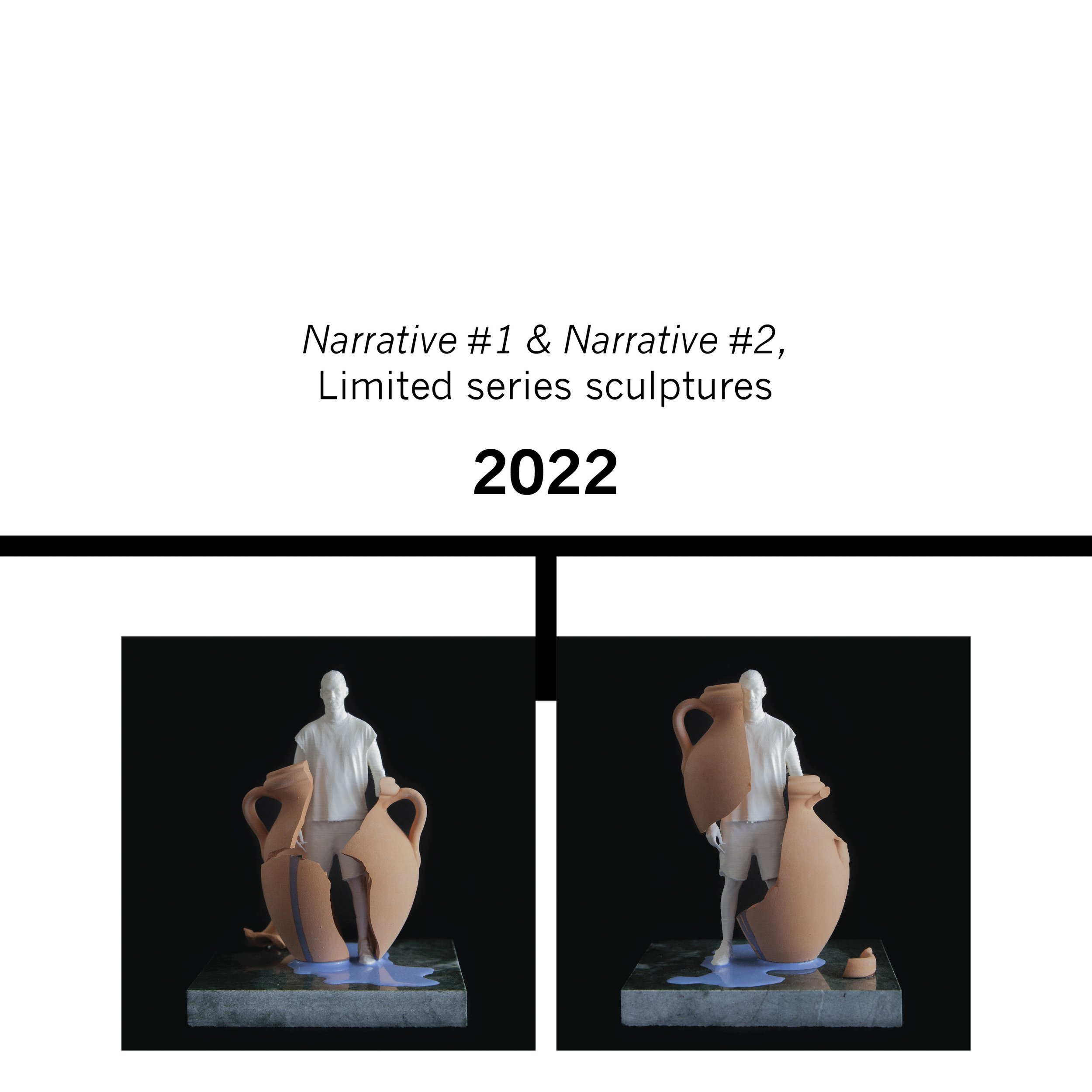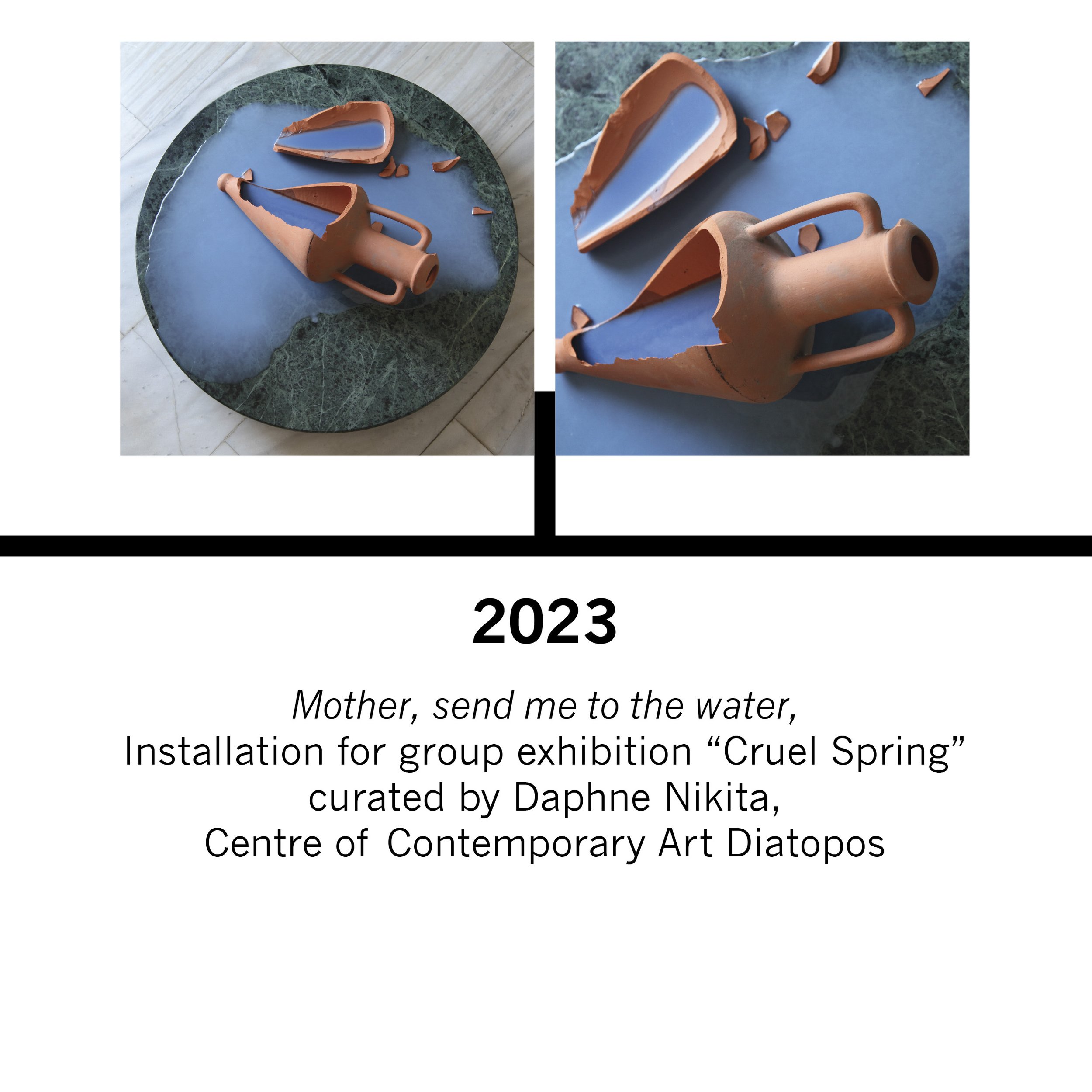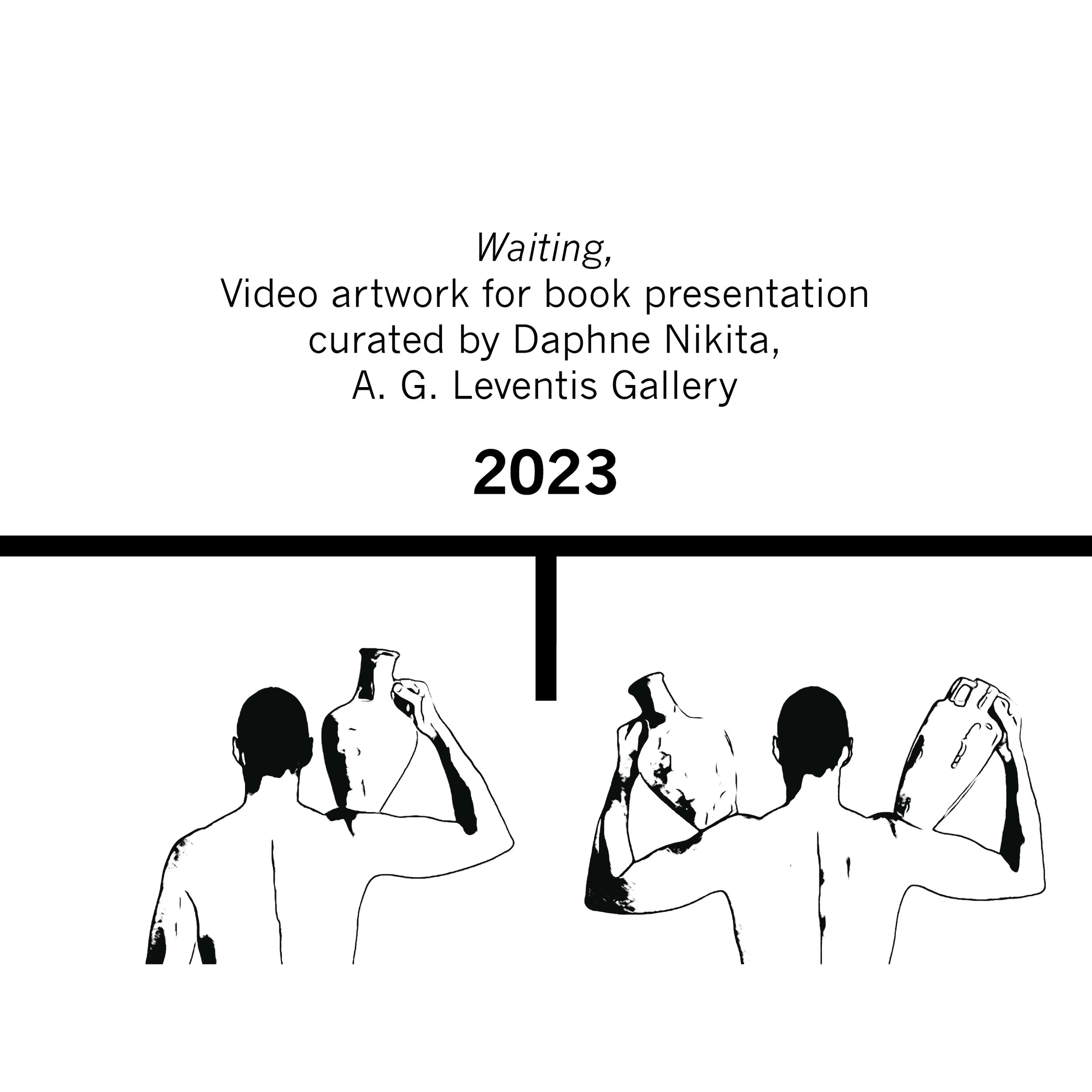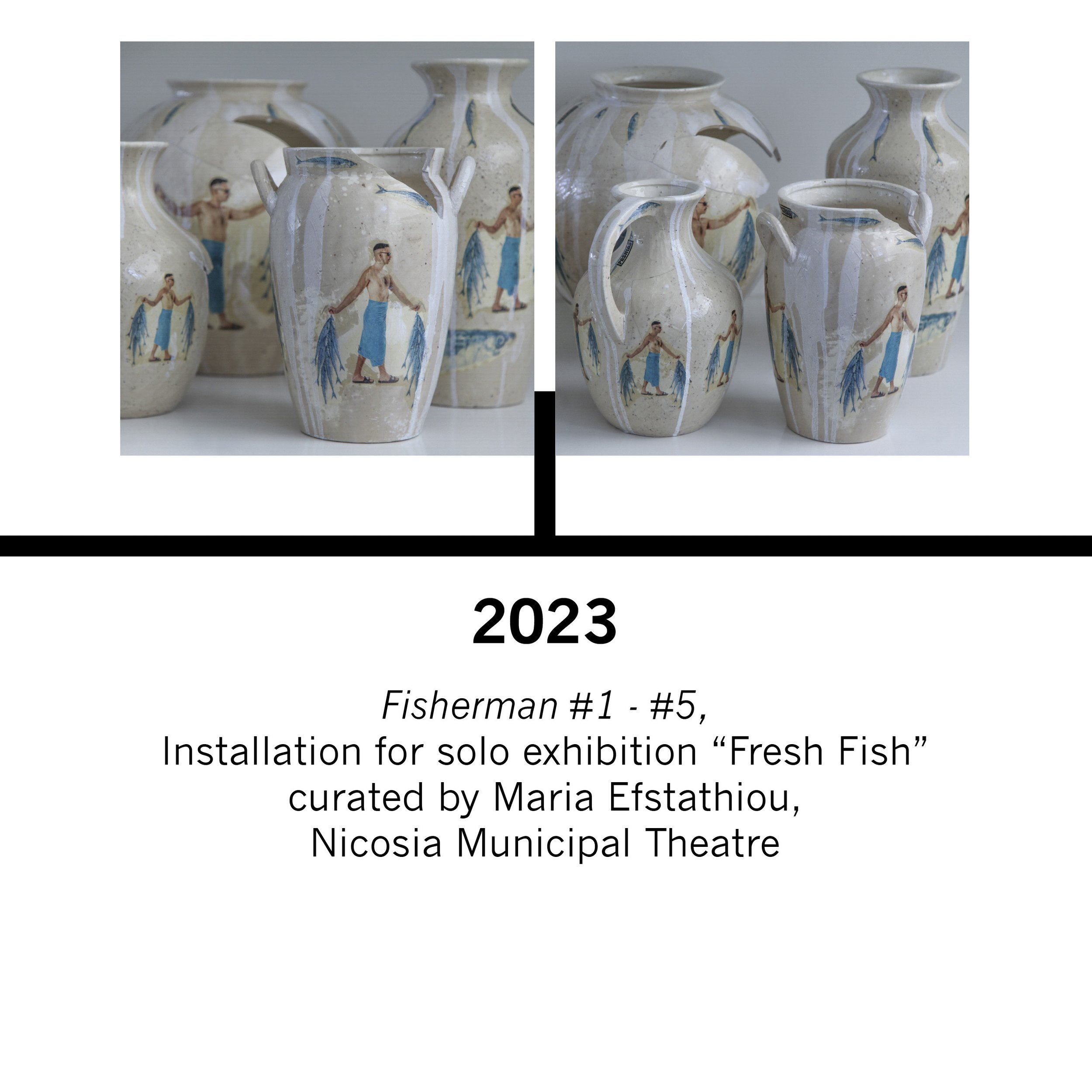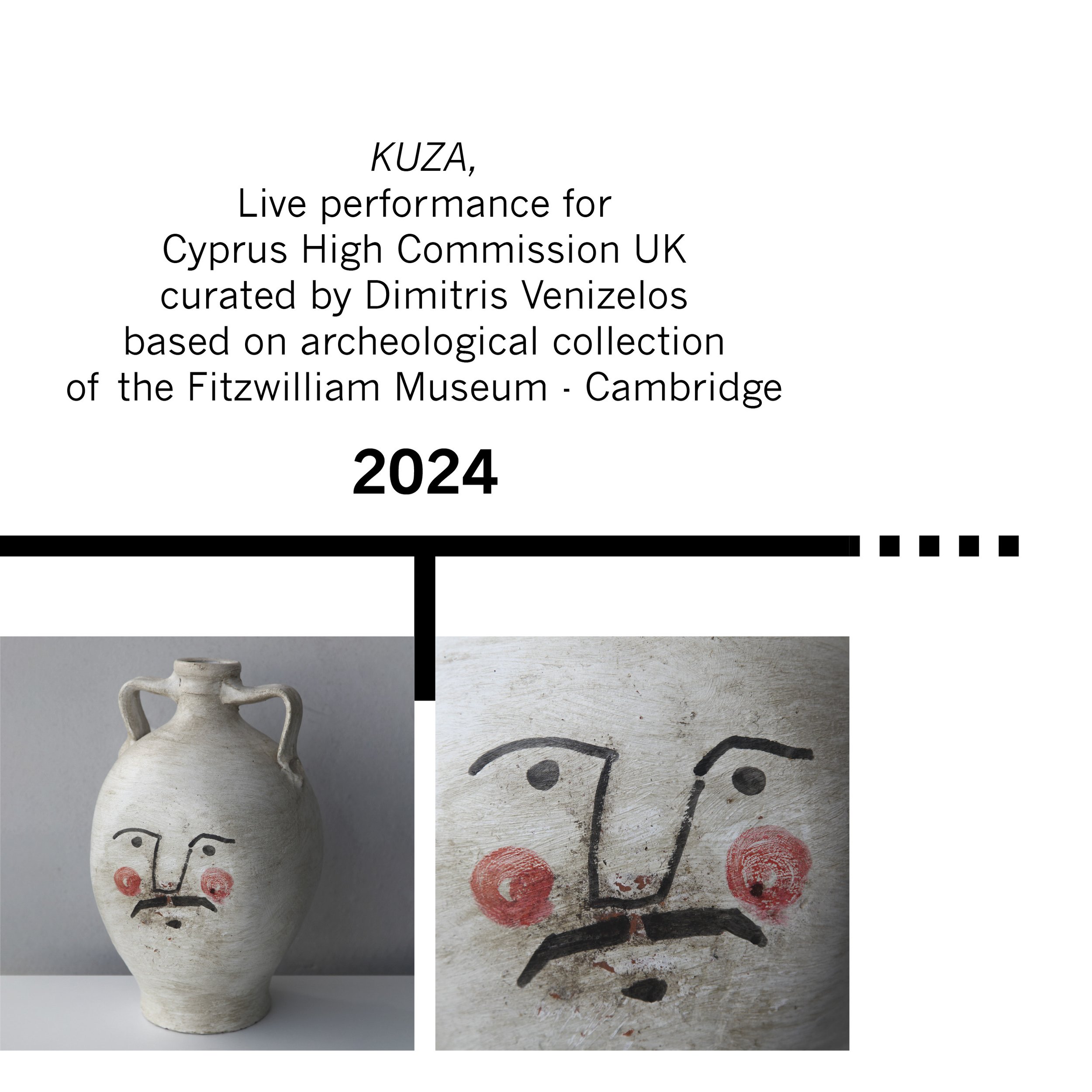KUZA - Live Performance
Organised by High Commission of Cyprus - UK
Curated by Dimitris Venizelos
Fitzwilliam Museum / Cambridge - UK
March - 2024 / Duration: 45'
Press Release, February - 2024
Visual artist PASHIAS visits the archeological collection of the Fitzwilliam Museum in Cambridge, to initiate a study on artefacts ranging from the Neolithic to the Late Roman period, and specifically the amphorae, housed in the Cyprus wing. PASHIAS brings forth a parallel connection between the human body and the clay body. A spherical volume as the belly, side handles as arms, a narrow neck and a mouth. The parallel associations move beyond imagery and visual parameters, equating the body and the amphora with universal vessels - carrying, safekeeping and spilling substances, materialities, ideas, experiences and cultural values.
On Saturday morning, 2nd of March, PASHIAS presents the live performane “KUZA” commissioned by the Cultural Section of the Cyprus High Commission, exhibiting the live body next to, near and in conversation with the antiquity vitrines and the museum’s architectural features. In Cypriot dialect, the vase or jar used to carry liquids is referred to as the ‘kuza’ (κούζα), most likely derived from the ancient Greek ‘kivi’ (κύβη) meaning head. PASHIAS’ skull transforms into a clay artefact, a fragmented vessel, a piece of our history that can only be complete once connected to the rest of the human body. Standing and resting, strong and fragile, withstanding the passage of time and withered.
The live performane “KUZA”, part of PASHIAS’ long-standing research into museological collections, brings forth the significance of Cyprus’ heritage, reconnecting historical evidence with the present. This artistic research has taken part at Musée des Augustins for the “Festival Ιnternational d'Art de Toulouse” (2014), the archeological collection of the Acropolis Museum for “PAS - Performance Art Studies” (2015), the archeological collection of George & Nefeli Giabra Pierides at Bank of Cyprus Cultural Foundation (2017), the Christophoros Savva artwork collection at State Gallery of Contemporary Cypriot Art (2018), the Michalis Michaeledes artwork collection at A. G. Leventis Gallery (2020) and the archives of Phivos Stavrides Foundation - Larnaca Archives (2021).
Promo Photo: PASHIAS, 2024
The relationship of humans with materiality, Article by Dimitris Venizelos, Kathimerini Newspaper, 31/03/24 - Read Article (GR)
Photography: Dimitris Venizelos
KUZA: The social, historical and material body of PASHIAS at the Fitzwilliam Museum, Cambridge
By Dr. Dimitirs Venizelos
Why do we use metaphors of our body such as ‘legs’ and ‘ears’ to describe parts of a clay pot? Why do we indulge in language games that conflate the amphora with a human head, as the word ‘kuza’ in the Cypriot dialect denotes? PASHIAS very literally asks this question by replacing his own head with a fragment of a ceramic pot recently crafted in Cyprus and transported to the Fitzwilliam Museum. PASHIAS’ figure, part-human and part-clay, engages in a dialogue with ceramics exhibited in the museum, which were fashioned from Cyprus’ earth millennia ago.
Archaeologists have put forth various theories regarding the origins of anthropomorphism in pottery: cultural symbolism, religious significance, practical needs of daily life drawing inspiration from our own bodily forms, or, alternatively, the metaphor could be seen as reflecting a universal aspect of human cognition rather than specific cultural or religious beliefs. PASHIAS’ previous work, such as the “Temple-boy” (2017), has explored these speculations. In “Temple-boy” the artist investigates the representation of the human body in a 5th c BC figurine through the notion of metabolism and by linking the ritualistic character of the anthropomorphic artifact with the physiological processes of the human body. However, the current piece suggests a different direction in the artist’s exploration of the topic. In contrast to the 5th c BC figurine which represents in a realistic way the human body, the ‘kuza’ is only its abstraction. It is suggested here that there is something profoundly relatable in the shape and materiality of the amphora that transcends mere resemblance to the human body.
The figure of the artist is a direct reference to this deep material connection of our body to a materialist history, to historic time, to what we coin as ‘heritage.’ What the human/kuza figure alongside the displayed archaeological findings suggests is that our relationship with history and time is not abstract but material, it is recollected as a ‘thing’. This is as a reminder - and how timely this is - that our lives are intertwined with those of others, our contemporaries, predecessors and successors through universal and enduring human needs that remain unchanged over the course of history. All humans suffer the same in the face of thirst, in the face of hunger. The amphorae were made to carry and distribute goods to satisfy these universal needs. In holding the amphora over his head with a gesture of a loving cuddle that surrounds his head/kuza, the artist holds simultaneously the universal head of humanity. With references to revolutionary ideas such as those of the Saint-Simonians, the artist assumes the responsibility to influence and shape society. This theme was addressed in earlier works of PASHIAS such as the “Metaphora” (2019), where the artist’s body assumes the structural role of an architectural element to support a (social) structure, or even in “A.B.S. (Training for performance #7)” (2016) where the artist, as a new Titan lifts the weight of the world on his shoulders.
From a different perspective, the figure of the artist/kuza represents humanity as a continuous material presence in our world, extending beyond our individual lifespans. The artifact provides evidence of this continuity in a tangible manner, as one can still discern human fingerprints left by the makers of ancient pottery. Their life’s work and labour are quite literally handed down to us in the form of clay. What could be more direct and corporeal than this? This material evidence of continuity serves as a comforting reassurance that our fleeting existence as individuals is not a futile singularity, but part of a diachronic human body which leaves lasting signs of presence in the span of history. This is a soothing reflection that alleviates the hardships of our everyday life, the loss, and the despair that accompany the contradictions inherent in the human condition.
The direct connection with the artist - whether it be the distant human of the past who left their fingerprints on the amphora, or PASHIAS who situates himself amidst the museum's visitors - encourages us to move beyond considerations of time. The artist's invitation to the visitors of the Cypriot Collection in the museum is to experience in an embodied way the potential of these objects to facilitate meaningful human connections. The interactions between the audience and the artist bear witness to this capacity of the artifact to mediate social relations here and now. These interactions may range from a dynamic of spectator and spectacle to a more intimate gesture of embrace; from an acknowledgment of the artist's contribution to the human experience to simply a reawakening of an uncritical curiosity that we often bury in our adulthood.
Isn't this rediscovery of our connection to materiality and to our fellow humans the essence of overcoming alienation, and of recognizing ourselves within the objective world we construct?
Performance Advisor & Curator of Ancient Mediterranean - Fitzwilliam Museum: Dr. Anastasia Christophilopoulou
Performance Coordinator & Cultural Counsellor of Cyprus High Commission: Marios Theocharous
Photography + Video: Elodie Giuge
It’s not broken: Fragments of tradition & memory in the practice of visual artist PASHIAS
Visual artist PASHIAS presents the online lecture “It’s not broken: Fragments of tradition & memory” for the Department of Arts & Graphic Design at the Minjiang University in Fujian - China, as a retrospective walkthrough of key pieces in his practice, centred around the amphorae. From his early photoragphic collages based on the archeological collection of Bank of Cyprus Cultural Foundation, juxtaposing the physical shape of the amphorae cut down the middle, next to the human figure, to the series of 3D sculptures “Narrative” presenting his miniature self breaking out of a clay egg, to his most recent live performance “KUZA” in which the artist’s skull transforms into a universal vessel complete only once connected to the human body.
Invited by Dr. Stavroula Michael, as a collaboration between the Minjiang University and the European University of Cyprus, PASHIAS connects the fragments of a country’s heritage and its social history, alongside his most personal pieces of memory and experience, to question the idea of being complete, wholesome, attached to a specific point of origin, in contrast to an identity that is constituted by an amalgamation of fragments. Tracing through the Japanese art of Kintsugi, the obvious golden cracks connecting and giving value to broken artefacts, to contemporary artistic offerings such as the installation “Looters” by Michal BarOr and the “FedEx Series” by Walead Beshty, the lecture proposes a fragmented history, a world tradition of breaking, as a process of creation and an act of survival.
Duration: 28th of March + 8th of April 2024
